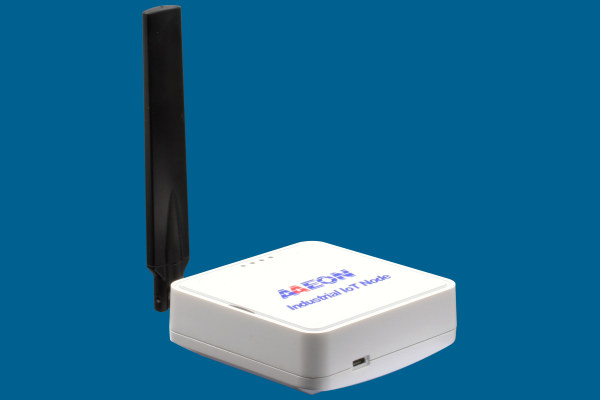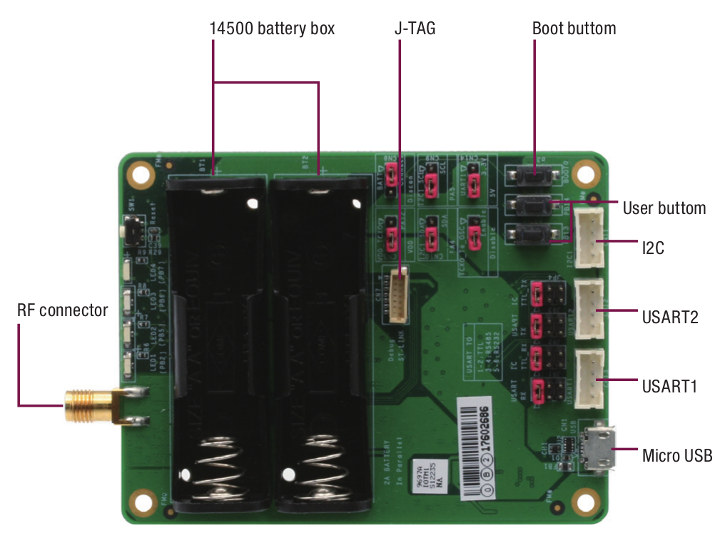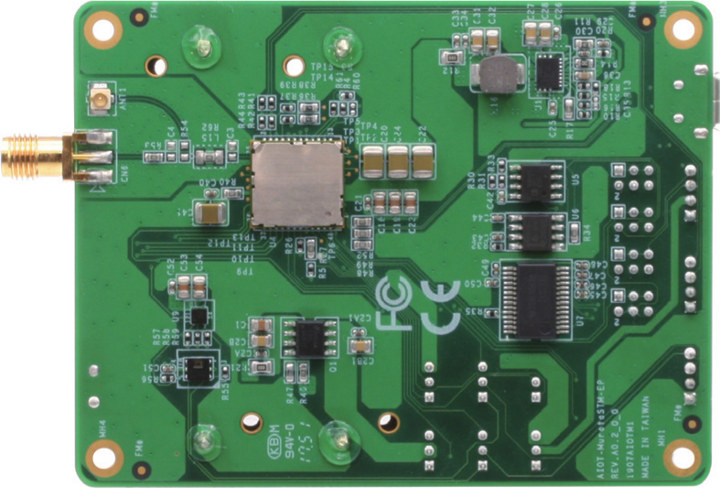AAEON specializes in industrial and embedded computing platforms, and usually their products are fairly powerful Windows or Linux based computers, gateways, or network appliances.
But in order to provide a complete LoRa solution to system integrators, the company has now introduced AIOT-ILND01 LoRa node powered by STMicro STM32 MCU, and compatible with their AIOT-IP6801IP68 IoT Gateway, as well as other LoRa gateways.
 AIOT-ILND01 LoRa node specifications:
AIOT-ILND01 LoRa node specifications:
- MCU – STMicro STM32L Arm Cortex-M3 MCU @ 32 MHz
- Connectivity
- 868MHz/915 MHz LoRa via Semtech SX1276 chipset
- 1x SMA antenna hole, 1x IPEX antenna hole
- Sensors – Temperature & humidity sensor, 3-axis accelerometer
- Expansion – 3x GROVE connectors: 1x UART1 (RS-232/422/485), 1x UART2 (Tx/Rx), 1x I2C
- Misc – 4x user LEDs, boot select button, 2x user buttons, 1x reset button
- Debugging – JTAG header
- Power Supply
- 5V via micro USB port
- Battery holder for 2x 14500 rechargeable Lithium-ion battires or AA batteries
- Dimensions – PCBA: 85 x 65 x 14 mm
- Temperature Range – 0°C ~ 60°C
- Certifications – CE, FCC

The STM32L MCU and Semtech SX1276 LoRa transceiver are clearly packed into a single chip, and I suspect it’s the same, or similar Murata module, as found in the official Arduino MKR WAN1300 board. The company however provides their own SDK for easy integration with their AIoT gateways, and cloud services such as Microsoft Azure, The Things Network, and ResIOT, which all certified for AAEON solutions. The GROVE connectors enable easy addition of the various sensor modules provided by Seeed Studio.
AIOT-ILND01 board ships with an antenna by default, but the enclosure pictured above is also available. Pricing has not been made public, and you’d need to request a quote through the product page.

Jean-Luc started CNX Software in 2010 as a part-time endeavor, before quitting his job as a software engineering manager, and starting to write daily news, and reviews full time later in 2011.
Support CNX Software! Donate via cryptocurrencies, become a Patron on Patreon, or purchase goods on Amazon or Aliexpress





